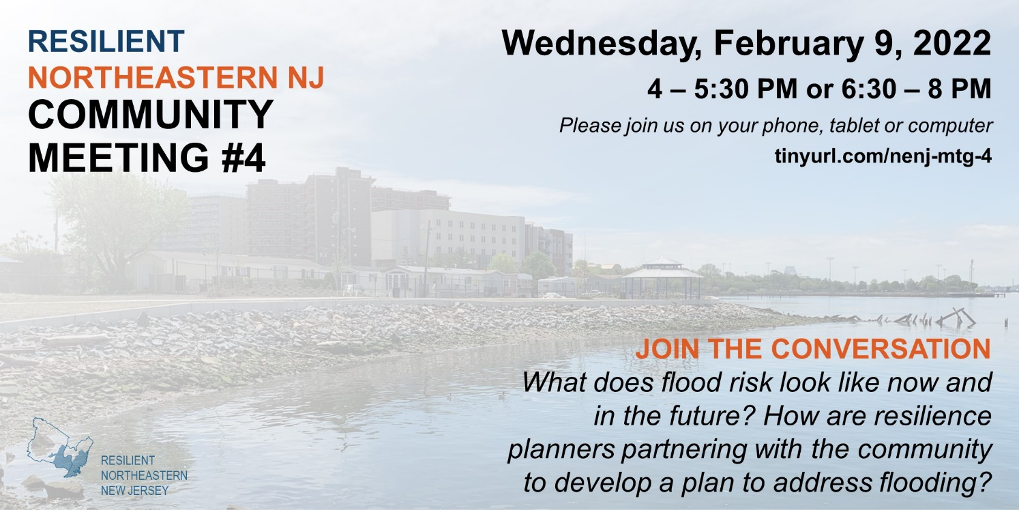At Community Meeting #4 on Wednesday, February 9, 2022, we shared our progress toward developing a regional action plan and the solutions we are evaluating to reduce flooding and increase resilience. We discussed approaches for implementing solutions at different scales (such as locally or regionally), outlined our next steps in the evaluation process, and asked for your feedback on solutions that we should look at or prioritize. These are the types of solutions that we covered:
- Physical solutions to help address flood risk, meaning coastal, drainage, or green infrastructure projects that can reduce risk from rainfall flooding, storm surge, and high tides.
- Non-physical solutions to help address flood risk, such as outreach efforts, policies, or programs that can help boost community involvement, increase adaptive capacity, and shape the built environment to create greener, more resilient communities.
This meeting covered different solutions and asked what should be prioritized and advanced, and future meetings will provide more detail about costs and possible timing of solutions.
The feedback we heard during this meeting reinforced what we’ve been hearing throughout this process (see feedback summarized in the Vision and Priorities report) such as:
- The urgency of the flooding problem and need for solutions to be implemented quickly
- That limited capacity of combined sewers and drainage systems are a key part of the flooding problem
- The importance of increasing engagement and community involvement in resilience
- The desire to see natural solutions such as green infrastructure and wetlands that offer co-benefits such as air quality improvements and ecosystem restoration
As we discussed ways that solutions could be implemented through different scales of leadership, we heard excitement about taking a regional approach to reducing flooding, rather than having local responsibility. Community members also expressed a need to not put too much burden for addressing flooding on individual residents, especially when affordability in the region is already a concern. Some participants shared a need to see greater financial responsibility and leadership from state and federal agencies for addressing flooding in this region, which is an economic center for the metropolitan area and state.
We’ll be incorporating feedback into our Draft Action Plan. Updated Questions & Answers to respond to questions we received during the meetings are coming soon.
We encourage you to check out the meeting slide decks or recordings to learn more about the solutions we are evaluating! If you have any questions or feedback, you can reach out to us at resilientNENJ@dep.nj.gov or leave us a message at 201-275-0861.
Meeting Survey
If you attended the meeting and have thoughts on how it went, we’d appreciate if you could take our meeting survey HERE to let us know!
Recordings
- Introductory Presentation | Presentación introductoria
- Physical Solutions Breakout | Presentacion de soluciones fisicas
- Non-Physical Solutions Breakout | Presentación sobre participación, políticas y programas
Slide Decks
Virtual Board
Maps with new flood hazard models and the physical solutions we discussed in the breakout room can be viewed in our virtual Miro board here.

